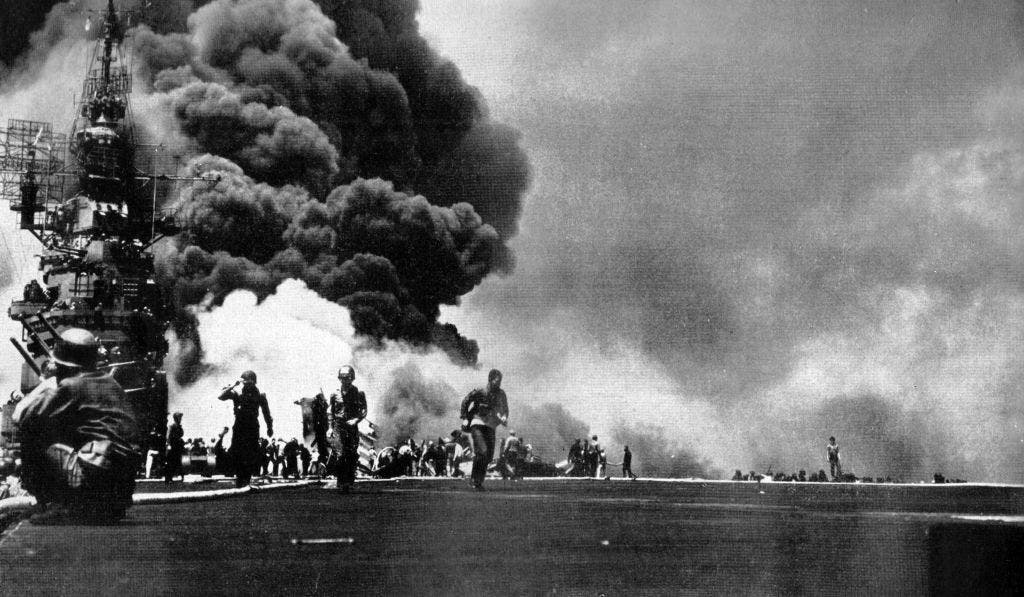On October 25, 1944, kamikaze suicide planes from Imperial Japan conducted their first attacks over Surigao Strait in the Philippines, causing terror among American sailors. Historian James P. Duffy noted that this was just the beginning of the devastating kamikaze attacks during World War II. By the end of the war in 1945, approximately 130 American warships had been sunk or damaged by kamikazes, resulting in the deaths of about 3,000 U.S. servicemen and women. The suicide attacks also claimed the lives of 5,000 Japanese kamikaze pilots. The USS St. Lo was the first ship targeted by a squadron of kamikazes, leading to the sinking of the ship and the loss of 134 lives.
The kamikaze attacks on October 25, 1944, included strikes on several American escort carriers, resulting in the deaths of nearly 300 sailors and the injury of many more. The term kamikaze translates to “divine wind,” referencing a typhoon that saved Japan from a Mongol invasion in the 13th century. Japanese pilots turned their aircraft into human guided missiles as a result of their fanatical resolve. Despite the defeat of Japan in the Philippines, the success of the kamikaze attacks led to their increased use throughout the war and beyond. The attacks coincided with St. Crispin’s Day, a significant date in military history that has been marked by notable battles and speeches.
St. Crispin’s Day has historical significance, with events such as the Battle of Agincourt in 1415 and the Charge of the Light Brigade in 1854 taking place on that date. King Henry V’s speech before the Battle of Agincourt, immortalized by Shakespeare, inspired his troops to victory. The term “band of brothers” has since become synonymous with camaraderie among soldiers and was the title of a renowned history book and subsequent television series about World War II. The Battle of Leyte Gulf, where the kamikaze attacks occurred, was a crucial engagement that marked a significant victory for the American forces over Japan’s sea and air power.
In addition to military events, St. Crispin’s Day has been associated with significant victories and historical moments, such as the recapture of Lisbon from Islamic forces during the Second Crusade in 1147. This victory had a lasting impact on the spread of Christianity in Europe. The Battle of Surigao Strait during World War II was a key part of the larger Battle of Leyte Gulf, which is considered one of the largest naval battles in history. The battle resulted in a decisive American victory, effectively crippling Japanese sea and air power. Despite the victory, the kamikaze attacks on St. Crispin’s Day marked a desperate and frenzied phase in the final months of World War II.


